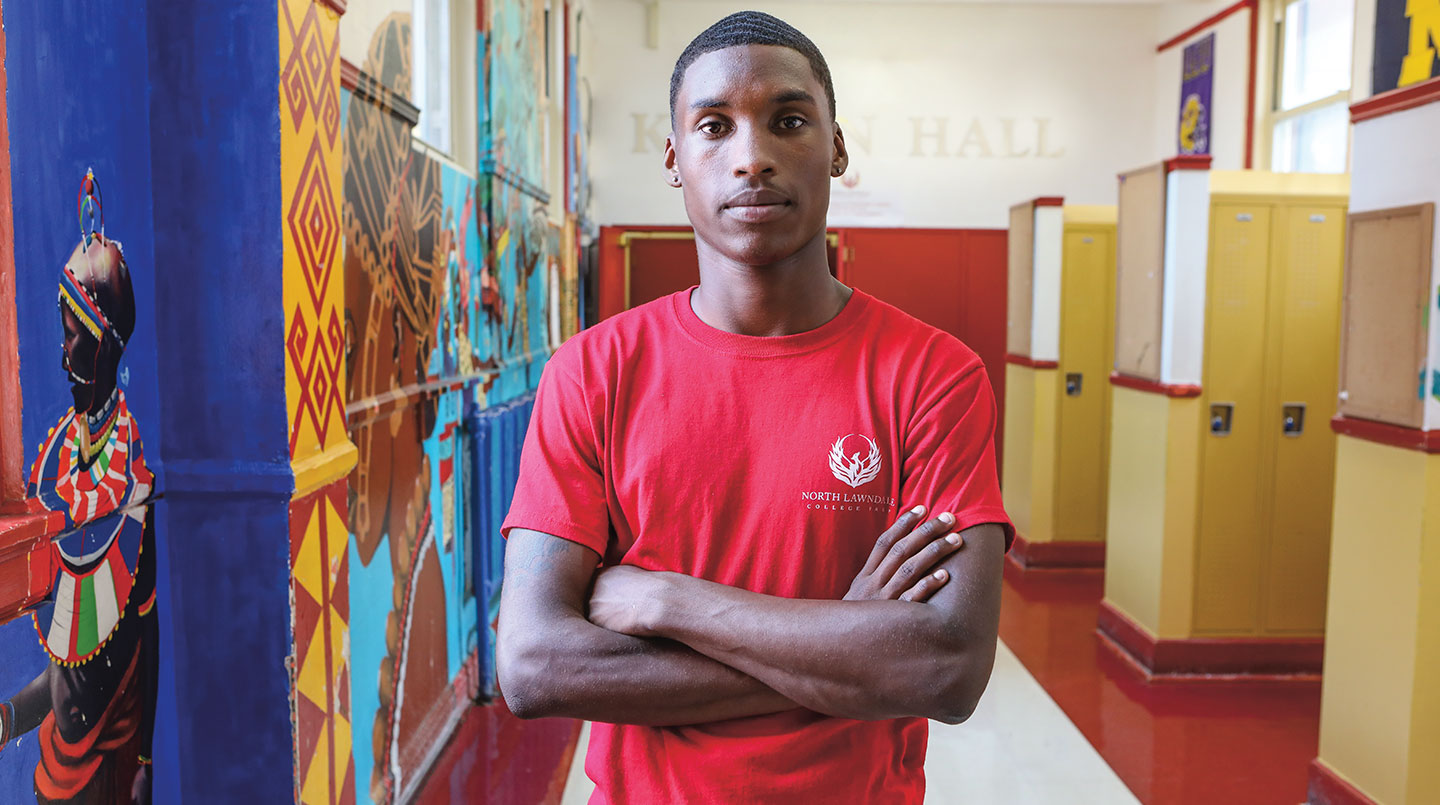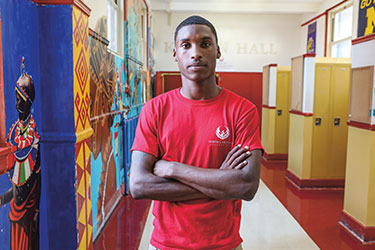The Peace Warriors initially caught Rahmier’s attention because of their T-shirts, which feature a giant peace sign on the back, and he decided to attend a meeting so he could get one. But after participating in just one meeting, he was hooked. The 25 or so teens and the handful of teacher advisers had deep discussions. They asked questions, such as “What was the saddest day of your life?” and “Talk about your experiences with violence—both physical and emotional.”
“At first I only felt comfortable sharing little bits of my life,” Rahmier says. “But when I finally shared how my dad died, it actually made me feel better.”
He tried to talk his best friend, Jordan Caples, into joining the group too. “Jordan was really affected by all the violence he saw in the neighborhood,” Rahmier remembers. “He thought peace was a lost cause.”
The Peace Warriors believe that violence doesn’t have to be met with more violence. “I had never heard this before,” Rahmier says. “My mom told me if somebody hits me, hit them back. But when I became willing to have my mind-set changed, it opened up everything.”
The principles that guide the Peace Warriors hold that nonviolence is actually more courageous than violence. Students learn that they can resolve conflicts by using humor, by encouraging people to talk things out, or by building a sense of community.
“Different Peace Warriors will do different things to break up a fight,” Rahmier says. “For example, one student is the class clown. So when he says something totally outrageous like ‘Whale blubber,’ everybody’s just going to laugh. We interject love and kindness, and we interrupt nonsense.”



